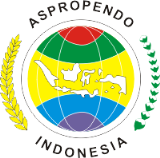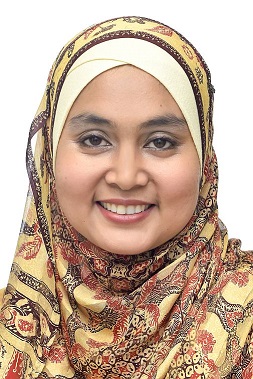DEVELOPMENT OF FOCUSKY BASED LEARNING MEDIA TO ENHANCE STUDENTS' CRITICAL THINKING SKILLS
DOI:
https://doi.org/10.23917/jpis.v35i1.7579Keywords:
: Learning media, focusky, critical thinking skillsAbstract
The method used in this research is development research or Research and Development (R&D) adapted and modified from Branch's ADDIE Model, which consists of five steps. This study aims to (1) describe the process of developing Focusky learning media for the subject of business entities in the Indonesian economy and (2) evaluate how well the media improves the critical thinking skills of high school students. The uniqueness of this study lies in the integration of Focusky a tool rarely explored in economics education with a structured instructional design to encourage critical thinking. In this study, questionnaires and observations were used as data collection methods. Eleventh-grade IPS students at SMAN Pakusari will be the subjects of the study for the product effectiveness test, which will be conducted using effect size calculations and the Paired Sample T-Test. IBM SPSS 29 is used to assist with data analysis in this research. The results show that the integration of Focusky media significantly supports the development of students' critical thinking. Through engaging visual content and interactive features, this media facilitates deeper understanding and active learning. These findings emphasize the potential of technology-based learning tools to enrich classroom experiences and promote essential 21st-century skills in economic education. From the results of the statistical research, it shows that the Focusky learning media is effective in improving students' critical thinking skills based on the significance values of the pretest and posttest from the small group (0.046 < 0.05) and the large group (0.049 < 0.05). The effect size test results for the small group received a value of 0.79 and for the large group received a value of 0.80. Both values indicate that the developed Focusky media has a significant impact on enhancing students'
critical thinking.
Downloads
References
Amri, M. F., Saragih, A. H., & Yulia, E. (2020). The Development of Interactive Learning Media Based on Problem Based Learning (PBL) Using Macromedia Flash 8. Proceedings of the 5th Annual International Seminar on Transformative Education and Educational Leadership (AISTEEL 2020). https://doi.org/10.2991/assehr.k.201124.039.
Arikunto, S. (2010). Prosedur Penelitian: Pendekatan Suatu Praktek. Jakarta: Rineka Cipta.
Branch, R. M. (2009). Instructional Design: The ADDIE Approach. Springer.
Burbules, N. C., Fan, G., & Repp, P. (2020). Five Trends of Education and Technology in A Sustainable Future. Geography and Sustainability, 1(2), 93–97. https://doi.org/10.1016/j.geosus.2020.05.001.
Carlgren, T. (2013). Communication, Critical Thinking, Problem Solving: A Suggested Course for All High School Students in the 21st Century. Interchange, 44(1–2), 63–81. https://doi.org/10.1007/s10780-013-9197-8 .
Clark, R. C., & Mayer, R. E. (2023). E-learning and The Science of Instruction: Proven Guidelines for Consumers and Designers of Multimedia Learning. Wiley.
Cohen, J. (1988). Statistical Power Analysis for the Behavioral Sciences (2nd ed.). Routledge.
Eltahir, Mohd. E., Alsalhi, N. R., Al-Qatawneh, S., AlQudah, H. A., & Jaradat, M. (2021). The Impact of Game-Based Learning (GBL) on Students’ Motivation, Engagement and Academic Performance on an Arabic Language Grammar Course in Higher Education. Education and Information Technologies, 26(3), 3251–3278. https://doi.org/10.1007/s10639-020-10396-w.
Ennis, R. H. (1996). Critical Thinking. New York: Freeman.
Gastama, A. N. F., Rosyida, F., Handoyo, B., & Soelistijo, D. (2023). The Effect of Group Investigation Model Assisted By Interactive Media Lectora Inspire on High School Students Critical Thinking Skills. Jurnal Inovasi Teknologi Pendidikan, 10(3), 233–244. https://doi.org/10.21831/jitp.v10i3.59490.
Gronlund. (2001). Constructing Achievement Test (5th ed.). New York: Prentice Hall inc.
Gulo, D. D. S., Laoli, B., Laoli, E. S., & Lase, A. (2024). Pengembangan Media Pembelajaran Video Interaktif Untuk Meningkatkan Hasil Belajar Siswa. Jurnal Inovasi Pendidikan Dan Teknologi Informasi (JIPTI), 5(2), 314–327. https://doi.org/10.52060/jipti.v5i2.2375.
Hingan, F. B., & Qomariyah, I. N. (2020). Pengembangan Media Pembelajaran Focusky Berbasis Learning Cycle 5E pada Materi Sistem Sirkulasi Manusia Siswa Kelas XI SMA. Prosiding Seminar Nasional IKIP Budi Utomo, 1(01), 383–391. https://doi.org/10.33503/prosiding.v1i01.1076.
Janse van Rensburg, J., & Rauscher, W. (2022). Strategies for Fostering Critical Thinking Dispositions in The Technology Classroom. International Journal of Technology and Design Education, 32(4), 2151–2171. https://doi.org/10.1007/s10798-021-09690-6.
Johnson, B., & Christensen, L. (2014). Educational Research: Quantitative, Qualitative, and Mixed Approaches. 4th edn. California: SAGE Publications, Inc.
Kang, Y., & Ritzhaupt, A. (2021). A Comparative Study of Game-Based Online Learning in Music Appreciation: An Analysis of Student Motivation and Achievement. Journal of Educational Multimedia and Hypermedia, 30(1), 59–80.
Kurniyasari, H., Hidayat, S., & Harfian, B. A. A. (2019). Analisis Keterampilan Berikir Kritis Siswa SMA Di Kecamatan Sako dan Alang-Alang Lebar. Bioma: Jurnal Biologi Dan Pembelajaran Biologi, 4(1), 1. https://doi.org/10.32528/bioma.v4i1.2646.
Lestari, Y., & Sunarso, A. (2024). Development of Interactive Media Based on GIPAS Application Assisted by Self-Directed Learning Model to Improve Critical Thinking Skills. Jurnal Penelitian Pendidikan IPA, 10(8), 4461–4469. https://doi.org/10.29303/jppipa.v10i8.7462.
Mayer, R. E. (2009). Multimedia Learning. Cambridge: Cambridge University Press. Mistianah, M., & Qomariyah, I. N. (2019). Pengembangan Modul Fokusky Parasitologi Pada Program Studi Pendidikan Biologi IKP Budi Utomo Malang. Jurnal Pendidikan Biologi, 11(1), 19. https://doi.org/10.17977/um052v11i1p19-23.
Mokmin, N. A. M., Hanjun, S., Jing, C., & Qi,S.(2024). Impact Of An AR-Based Learning Approach on The Learning Achievement, Motivation, and Cognitive Load of Students on A Design Course. Journal of Computers in Education, 11(2), 557–574. https://doi.org/10.1007/s40692-023-00270-2.
Muna, K. N., & Wardhana, S. (2022). Pengembangan Media Pembelajaran Video Animasi dengan Model ADDIE pada Pembelajaran Bahasa Indonesia Materi Perkenalan Diri dan Keluarga untuk Kelas 1 SD. EduStream: Jurnal Pendidikan Dasar, 5(2), 175–183. https://doi.org/10.26740/eds.v5n2.p175-183.
Najmul, I., Cahya, E., & Nurjanah, N. (2018). Pembelajaran dengan Pendekatan Kontekstual Berbantuan Software Focusky Untuk Meningkatkan Kemampuan Berpikir Kritis dan Disposisi Matematis. Jurnal Penelitian Pendidikan, 17(3), 213–219. https://doi.org/10.17509/jpp.v17i3.9615.
Naredi, H., Ruslan, A., &Sanijan, L. A.(2022). Model Pembelajaran Blended Learning: Sebagai Strategi Dalam Meningkatkan Daya Tarik Peserta Didik Pada Mata Pelajaran Sejarah. BEMAS: Jurnal Bermasyarakat, 3(1), 27–33. https://doi.org/10.37373/bemas.v3i1.206.
Novitasari, D. (2020). Efektivitas Model Ttw Berbantuan Software Focusky Terhadap Hasil Belajar Ekonomi Siswa SMA Mujahidin Pontianak. Jurnal Pendidikan Dan Pembelajaran Khatulistiwa, 9(1), 1–10.
OECD. (2016). PISA 2015. https://www.oecd.org/en/publications/pisa-2015-results-volume-i_9789264266490-en.html.
Offiana, I., Agung Gede, D. A., & Nafi’ah, U. (2020). Pengembangan Media Pembelajaran Komik Digital pada Materi Pokok Keruntuhan VOC untuk Peserta Didik Kelas XI MIPA 4 SMAN 1 Turen Kabupaten Malang. Jurnal Pendidikan Sejarah Indonesia, 6(1), 19–29. https://doi.org/10.17977/um0330v6i1p19-29.
Pham, D. T. T. (2021). The Effects of Audiovisual Media on Students’ Listening Skills. International Journal of TESOL & Education, 1(1), 13–21.
Rustandi, A., & Rismayanti. (2021). Penerapan Model ADDIE dalam Pengembangan Media Pembelajaran di SMPN 22 Kota Samarinda. JURNAL FASILKOM, 11(2), 57–60. https://doi.org/10.37859/jf.v11i2.2546.
Saad, A., Elbashir, A., Abdou, R., Alkhair, S., Ali, R., Parangusan, H., Ahmad, Z., & AlThani, N. J. (2024). Exploring of the Gender Variations in 4Cs Skills among Primary Students. Thinking Skills and Creativity, 52, 101510. https://doi.org/10.1016/j.tsc.2024.101510.
Sanjaya, W. (2012). Strategi Pembelajaran Berorientasi Standar Proses Pendidikan. Jakarta: Kencana.
Sugiyono. (2016). Metode Penelitian Kuantitatif, Kualitatif dan R&D. Bandung: PT Alfabeta.
Švecová, V., Rumanova, L., & Pavlovičová, G. (2014). Support of Pupil’s Creative Thinking in Mathematical Education. Procedia-Social and Behavioral Sciences, 116, 1715–1719.
Yunitasari, I., Aini, M., & Nurul, H. (2022). Keefektifan Media Pembelajaran IPA “Radiasi” Berbantuan Software Focusky Untuk Memfasilitasi Hasil Belajar Peserta Didik. Jurnal Kiprah Pendidikan, 1(4), 261–267. https://doi.org/10.33578/kpd.v1i4.119.
Zahwa, F. A., & Syafi’i, I. (2022). Pemilihan Pengembangan Media Pembelajaran Berbasis Teknologi Informasi. Equilibrium: Jurnal Penelitian Pendidikan Dan Ekonomi, 19(01), 61–78. https://doi.org/10.25134/equi.v19i01.3963.
Zulhelmi, Z., Adlim, A., & Mahidin, M. (2017). Pengaruh Media Pembelajaran Interaktif Terhadap Peningkatkan Keterampilan Berpikir Kritis Siswa. Jurnal Pendidikan SainsIndonesia (Indonesian Journal of Science Education), 5(1), 72–80.
Downloads
Submitted
Accepted
Published
Issue
Section
License
Copyright (c) 2025 Jurnal Pendidikan Ilmu Sosial

This work is licensed under a Creative Commons Attribution 4.0 International License.













